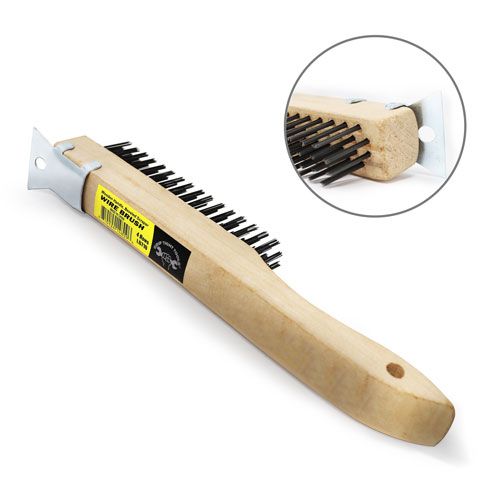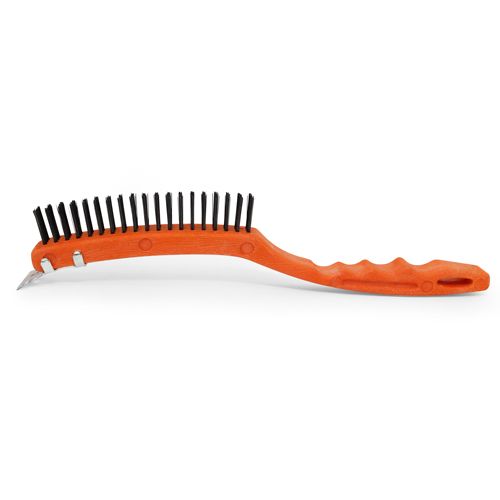FREE SHIPPING ON ORDERS $35+ (Excludes Bulky Items)
Wire Brush
WIRE BRUSH FAQ's
What is Wire Brush?
A wire brush is a tool that consists of a brush whose bristles are made of wire, most often steel wire. The wire bristles are stiff and abrasive and are used for cleaning and preparing metal surfaces. A wire brush can also be used for cleaning hard surfaces, striking a gong or a bell, playing percussion instruments, or removing rust and paint.
There are different types of wire brushes for different purposes, such as:
- Handheld wire brushes: These have a handle of wood or plastic and are used for manual scrubbing of surfaces.
- Wheel wire brushes: These have a circular shape and are mounted on power tools such as angle grinders or bench grinders. They are used for fast and efficient cleaning of large areas.
- Cup wire brushes: These have a cup-shaped base and are attached to drill motors or other power tools. They are used for cleaning corners, edges, or hard-to-reach places.
- End wire brushes: These have a cylindrical shape and are fixed to drill motors or other power tools. They are used for cleaning holes, pipes, or tubes.
How to use Wire Brush?
To use a wire brush, you need to follow these steps:
- Choose the right type and size of a wire brush for the surface you want to clean. Wire brushes can have different shapes, such as handheld, wheel, cup, or end. They can also have different types of wire bristles, such as steel, brass, or stainless steel.
- Attach the wire brush to a power tool if needed. Some wire brushes can be mounted on power tools such as angle grinders, bench grinders, drill motors, or other power tools. Make sure the wire brush is securely attached and compatible with the power tool.
- Wear safety goggles and gloves to protect your eyes and hands from injury. Wire brushes can produce sparks, dust, or flying debris that can harm you. You may also need a dust mask or ear protection if the surface produces fine particles or loud noise.
- Scrub the surface with the wire brush and apply steady pressure. Move the wire brush back and forth or in a circular motion over the surface you want to clean. Pay attention to the corners and edges where dirt or rust may accumulate.
- Clean the wire brush after use and inspect it for damage. Remove any debris or residue from the wire bristles with a cloth or a soft brush. Replace or repair any broken or worn-out wire bristles.
Some tips for using a wire brush are:
- Use a wire brush with paint thinner or remover to remove paint from wood or metal surfaces. Apply the paint thinner or remover to the surface and let it soak for a few minutes. Then scrub the surface with the wire brush to dissolve and remove the paint.
- Use a wire brush with a bevel edge to clean curved or irregular surfaces. A bevel-edge wire brush has an angled edge that can fit into tight spaces and contours better than a flat-edge wire brush.
- Use a wire brush with a ball head to access hard-to-reach places. A ball-head wire brush has a ball-shaped end that can angle up to 25 degrees and reach places that a straight or L-shaped wire brush cannot.


